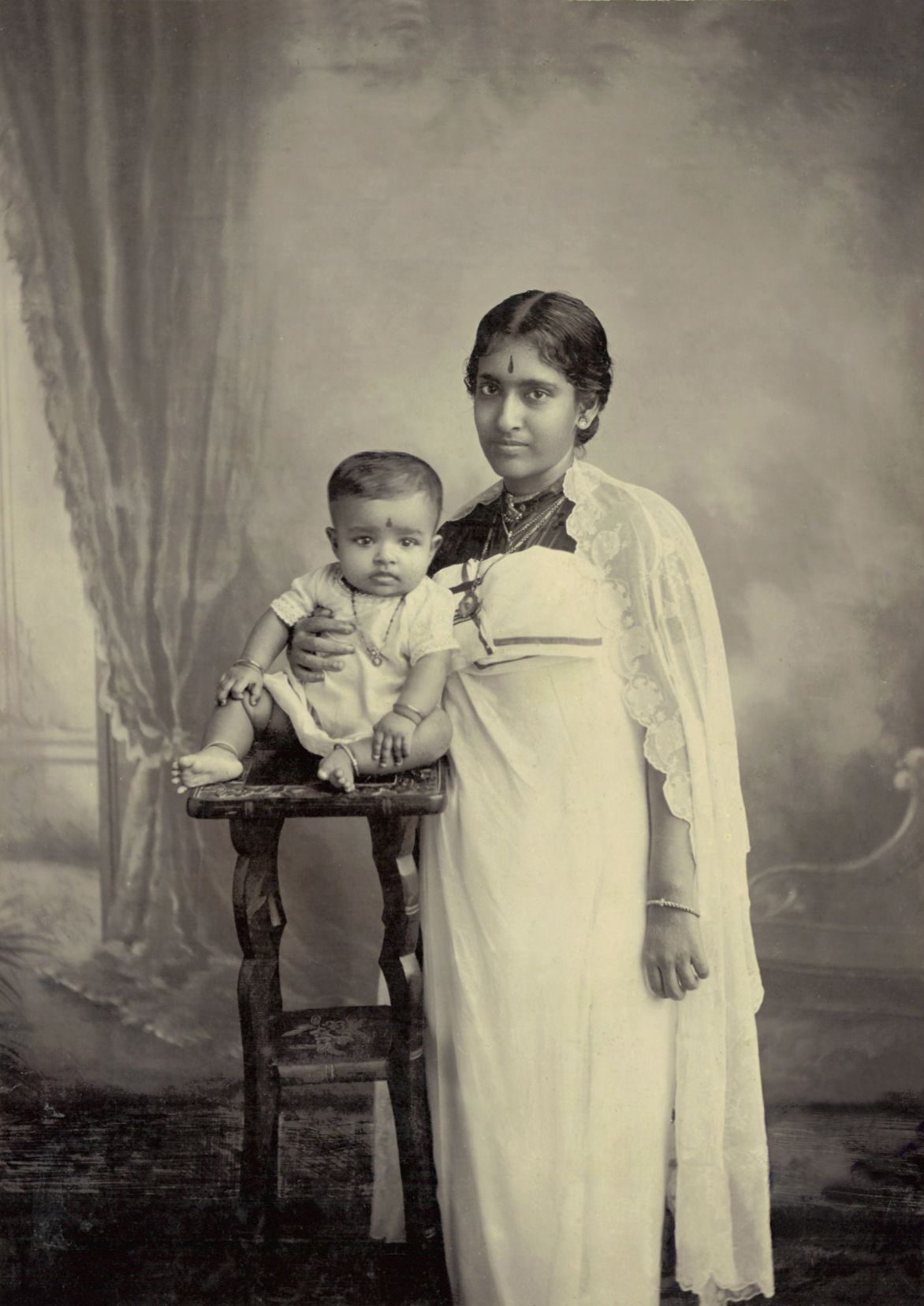NORTH OF INDIA
EAST OF INDIA
CENTRAL INDIA
WEST OF INDIA
SOUTH OF INDIA
NORTH OF INDIA
EAST OF INDIA
CENTRAL INDIA
WEST OF INDIA
SOUTH OF INDIA

This piece was shortlisted for the Conde Nast Excellence Award for Food Writing, 2019.
Manu S Pillai writes about the elaborate culinary traditions of the royal kitchens at Satelmond Palace, home of Maharani Sethu Lakshmi Bayi of Travancore.
The year 1947 marked the dawn of independence and the advent of democracy in India. But far away from the celebrations in Delhi, these events sparked something quite different in the kitchens of the Maharani of Travancore: that dreaded word ‘economy’. Sethu Lakshmi Bayi had ruled over 5 million subjects in south Kerala in the second half of the 1920s. She was “popular and respected”, and despite her weighty string of titles (at least 7 on an ordinary day), her lifestyle was, in the awed words of a colonial official, “notoriously simple”. But these only concerned personal habits — where Sethu Lakshmi Bayi’s public incarnation as Maharani emerged, matters were governed by protocols and seemingly inalterable traditions. In this area, all she did was decided by priests and courtiers, with advice on everything from the appropriate position in which to slumber, to precisely how many payasams could be served at the end of dinner.
In 1949, the state of Travancore was integrated with the Indian Union, and Sethu Lakshmi Bayi’s family lost power. An ample privy purse was bestowed on her nephew, the Maharajah, but because relations between the two were less than satisfactory, the Maharani’s affairs needed now to be managed with her own resources: an annual pension of Rs. 75,000 for her services to the state, and a government allowance of Rs. 50,000 in recognition of her title. The effects of these alterations were first felt in the royal kitchens. As her husband (who, in the matrilineal system that the House of Travancore followed was merely a ‘consort,’ and not himself royal) lamented to their grandchildren, “I have had to cut down from 24 cooks to 12 cooks!” It was quite a transformation, for after all, the palace fed hundreds of people on the daily, and while the domestic staff was axed from a total of 300 to 50, the Maharani’s household remained more an establishment than a private home.
For all that, the kitchens of the Maharani were a fascinating place. In keeping with tradition, these were never attached to the main palace building, but housed in a separate structure called the madappally — years later when Sethu Lakshmi Bayi moved to Bangalore, here too there was a separate madappally. The chief cooks within were always Brahmins, as were those who served the Maharani her meals in silver bowls and plates, placed on a plantain leaf. But the servants who removed used trays and leaves came from the Nair caste, though these too worked in the palace, not out of pressing need, but because of the prestige attached to handling leftovers of their hallowed queen. The fare was always, without question, vegetarian — anything else would be scandalous. Indeed, at state banquets featuring visiting British Viceroys and dignitaries, members of the ruling house abstained from food fearing caste pollution. Instead, they quietly watched their guests, clutching lemons, which reportedly absorbed ‘western impurities.’ The first time Sethu Lakshmi Bayi herself saw a European cut meat was when she was nearly thirty.

Maharani with her consort, Rama Varma, and her daughters, Princesses Lalitamba and Indira
Image credit: Jay Gopal Varma, Travancore royal family
Over time, of course, changes crept in. Breakfast and dinner were usually simpler affairs, and rules were somewhat relaxed. But lunch was necessarily elaborate. Brahmin servitors from the madappally emerged bearing huge vessels on their heads, bringing these into the dining room. What each person was served was determined by their exact status in the royal hierarchy, added to which was a generous helping of religion —there was a special palace officer who kept track of every member’s birth-nakshatra and advised them on which days they ought to fast, and what items could or could not be eaten, say, on a Tuesday. The Maharani’s husband, himself unorthodox enough to introduce into the palace menu a tribal teeyal he picked up on hunting expeditions in the jungle, had his own habits: all he ate, for decades, was toast with karipatti, an item prepared using palm jaggery. As for Sethu Lakshmi Bayi, she barely touched most of her food; but one thing she did eat was a special kind of pacha (‘green’) sambar, from which she might drop chunks of potato into the craving mouth of a favourite grandchild.
There was a strict elegance to every meal, even when dining in private. The Maharani began her day, after prayers, with a long and elaborate bath, followed by a simple breakfast at about 10.30. All she had were two idlis and a coconut chutney with sips of paalum-vellam, or watered-down milk, served in a large silver kinnam. After meetings and official matters were out of the way, lunch followed at 2pm, where her family joined her. As her granddaughter recalls, there were “at least fifteen different things in silver bowls, all of which she simply pecked at. Two things unvarying amongst the dishes were a poduthuval made of ripe banana and a pacha pulissery.” To this was added pappadoms fried in ghee and varathupperi, all of which was eaten with podiari rice. It was only at dinner time that some rules took a leave of absence, for the Maharani tended not only to go to bed late, but also to eat only around midnight. While silver trays went up to her bedroom again, what she ate was again idlis with pulissery, and her pallum-vellam. “All brought in,” remembers her granddaughter, “in a huge silver tray far too large for these little viands.”
If this was the lifestyle at the Maharani’s Satelmond Palace, the home of the Maharajah, a few miles away was more willing to flirt with culinary apostasy. To begin with, it was his mother, the Junior Maharani, who first began to appear at private parties and events — until the 1930s, it was taboo for members of the royal family to be seen outside court circles. The Junior Maharani, a hostess of repute, also had no qualms eating with foreigners. While her own consort sat with lemons, she, it has been noted by a descendant, established an ‘English kitchen’ in addition to her ‘Indian kitchen’. Where guests at her garden parties were served fried fish, she had cassava shaped and presented in an exact imitation, from which she could eat without sacrificing her vegetarian credentials. (Incidentally, the cassava was introduced to Kerala in the 1880s by a Travancore Maharajah.) Unlike Sethu Lakshmi Bayi, who admitted that when god distributed culinary gifts, she had excused herself, the Junior Maharani was a skilled cook, even in old-age, preparing delights for members of her family on a makeshift stove in her bedroom.

Maharani Sethu Lakshmi Bayi with Princess Lalitamba
Image credit: Jay Gopal Varma, Travancore royal family
Caste, however, was an ever-present phenomenon in the Travancore dining room. The wives of male members of the royal family were Nairs — if an ammachi (as these consorts were titled) set foot even by accident into the hall when a feast was underway, the proceedings would need to be suspended at once. It was another matter that behind closed doors (and after dark) these rules were bent, but usually female consorts ate in separate spaces. In the 1940s, when Sethu Lakshmi Bayi welcomed a Nair sister-in-law by freely touching her (again taboo for the Maharani, for any physical contact was lèse-majesté), it caused much surprise to the bride. But by the 1960s, when she was living in new conditions, Sethu Lakshmi Bayi herself gave up old, anachronistic rules: where once Nairs could not defile the royal presence during mealtimes, she appointed now a Nair cook. Where once only Brahmin maids assisted her in the bath and with her daily ablutions, towards the end it was Christian nurses who sat with her and helped her through the day.
Travancore, of course, had by now dissolved from the political map of India. Its former royal family was scattered — Sethu Lakshmi Bayi’s descendants, for instance, live in lands as distant as Australia, America, and Europe. Indeed, as early as 1957, the Maharani herself bid farewell to her royal heritage and embarked on a new life in Bangalore, allowing for her daughters and grandchildren to become new people in a changing world. In that year, soon after a Communist government came to power in Kerala, and the remaining 50 servants formed a union in her palace, Sethu Lakshmi Bayi took her leave. She sat on a train, and never went back to the land she once ruled. And with that, the madappally at Satelmond Palace was closed. All its tales were now consigned to a world of memories, and what was left were wistful stories that began always with “Once upon a time there was a queen…”
Manu S Pillai is the author of The Ivory Throne (2015) and Rebel Sultans (2018), and a winner of the Sahitya Akademi Yuva Puraskar.
ALSO ON THE GOYA JOURNAL
My favourite Malayali cuisine is a unique, traditional snack of my State, Kerala (India). And it's the well known Kumbilappam, an authentic and exclusive snack of the Malabar coast.
They are nothing but hot steamed sweet dumplings flavoured with 'true cinnamon leaf'.
This snack comes in different variants but the Jack Fruit variant is the flagship one. Indeed this is one fine food that comes from the Official State Fruit (Jack Fruit). And it's a seasonal snack.
Well, Kumbilappam is also something hard to find. I mean they are not much into being commercialised.
But since this snack is my family's top favourite, my Amma makes them frequently during the Jack Fruit season.
I guess it's sad that Kumbilappam is still within the kitchens of Malayali households and not a popular commercial snack.
I suppose it's due to the hardship in dealing with the Jack Fruit and the difficulty in finding bulk quantity of 'true cinnamon leaves' that cause a hindrance.
Well I guess the True Cinnamon Tree is somewhat uncommonn. In fact, in my neighbourhood, I am the sole owner of a True Cinnamon Tree.
(Sure, I offer leaves to my neighbours).
Kumbilappam is a traditional, delightful snack and it is made from one of the sweetest fruits and they do come out of hot steamer wrapped in aromatic flavouring leaves as the world's most unique dumpling.
It's something that ought to be tasted.
Footnotes
